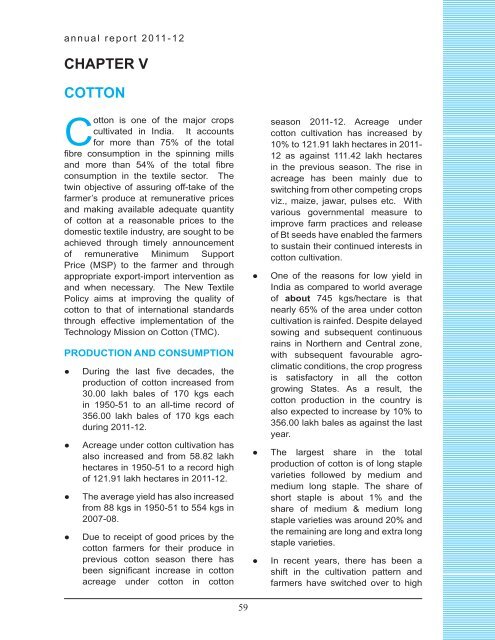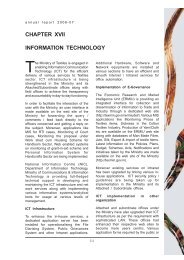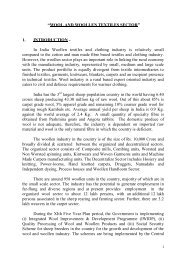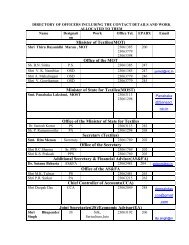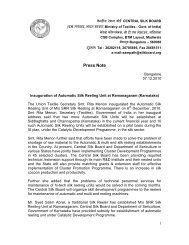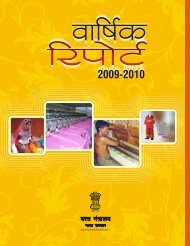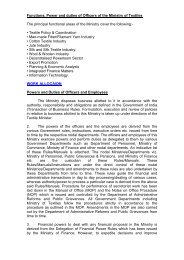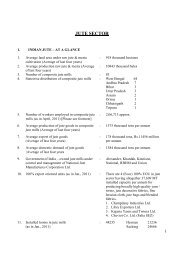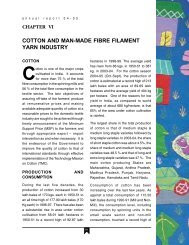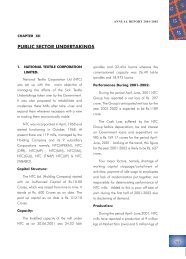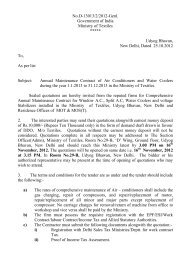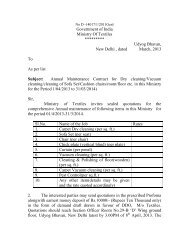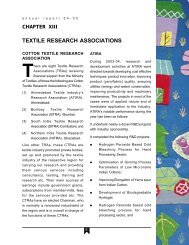chapter viii wool & wollen textiles industry - Ministry of Textiles
chapter viii wool & wollen textiles industry - Ministry of Textiles
chapter viii wool & wollen textiles industry - Ministry of Textiles
You also want an ePaper? Increase the reach of your titles
YUMPU automatically turns print PDFs into web optimized ePapers that Google loves.
annual report 2011-12<br />
CHAPTER V<br />
COTTON<br />
Cotton is one <strong>of</strong> the major crops<br />
cultivated in India. It accounts<br />
for more than 75% <strong>of</strong> the total<br />
fibre consumption in the spinning mills<br />
and more than 54% <strong>of</strong> the total fibre<br />
consumption in the textile sector. The<br />
twin objective <strong>of</strong> assuring <strong>of</strong>f-take <strong>of</strong> the<br />
farmer’s produce at remunerative prices<br />
and making available adequate quantity<br />
<strong>of</strong> cotton at a reasonable prices to the<br />
domestic textile <strong>industry</strong>, are sought to be<br />
achieved through timely announcement<br />
<strong>of</strong> remunerative Minimum Support<br />
Price (MSP) to the farmer and through<br />
appropriate export-import intervention as<br />
and when necessary. The New Textile<br />
Policy aims at improving the quality <strong>of</strong><br />
cotton to that <strong>of</strong> international standards<br />
through effective implementation <strong>of</strong> the<br />
Technology Mission on Cotton (TMC).<br />
Production and Consumption<br />
●<br />
●<br />
●<br />
●<br />
During the last five decades, the<br />
production <strong>of</strong> cotton increased from<br />
30.00 lakh bales <strong>of</strong> 170 kgs each<br />
in 1950-51 to an all-time record <strong>of</strong><br />
356.00 lakh bales <strong>of</strong> 170 kgs each<br />
during 2011-12.<br />
Acreage under cotton cultivation has<br />
also increased and from 58.82 lakh<br />
hectares in 1950-51 to a record high<br />
<strong>of</strong> 121.91 lakh hectares in 2011-12.<br />
The average yield has also increased<br />
from 88 kgs in 1950-51 to 554 kgs in<br />
2007-08.<br />
Due to receipt <strong>of</strong> good prices by the<br />
cotton farmers for their produce in<br />
previous cotton season there has<br />
been significant increase in cotton<br />
acreage under cotton in cotton<br />
●<br />
●<br />
●<br />
season 2011-12. Acreage under<br />
cotton cultivation has increased by<br />
10% to 121.91 lakh hectares in 2011-<br />
12 as against 111.42 lakh hectares<br />
in the previous season. The rise in<br />
acreage has been mainly due to<br />
switching from other competing crops<br />
viz., maize, jawar, pulses etc. With<br />
various governmental measure to<br />
improve farm practices and release<br />
<strong>of</strong> Bt seeds have enabled the farmers<br />
to sustain their continued interests in<br />
cotton cultivation.<br />
One <strong>of</strong> the reasons for low yield in<br />
India as compared to world average<br />
<strong>of</strong> about 745 kgs/hectare is that<br />
nearly 65% <strong>of</strong> the area under cotton<br />
cultivation is rainfed. Despite delayed<br />
sowing and subsequent continuous<br />
rains in Northern and Central zone,<br />
with subsequent favourable agroclimatic<br />
conditions, the crop progress<br />
is satisfactory in all the cotton<br />
growing States. As a result, the<br />
cotton production in the country is<br />
also expected to increase by 10% to<br />
356.00 lakh bales as against the last<br />
year.<br />
The largest share in the total<br />
production <strong>of</strong> cotton is <strong>of</strong> long staple<br />
varieties followed by medium and<br />
medium long staple. The share <strong>of</strong><br />
short staple is about 1% and the<br />
share <strong>of</strong> medium & medium long<br />
staple varieties was around 20% and<br />
the remaining are long and extra long<br />
staple varieties.<br />
In recent years, there has been a<br />
shift in the cultivation pattern and<br />
farmers have switched over to high<br />
59


